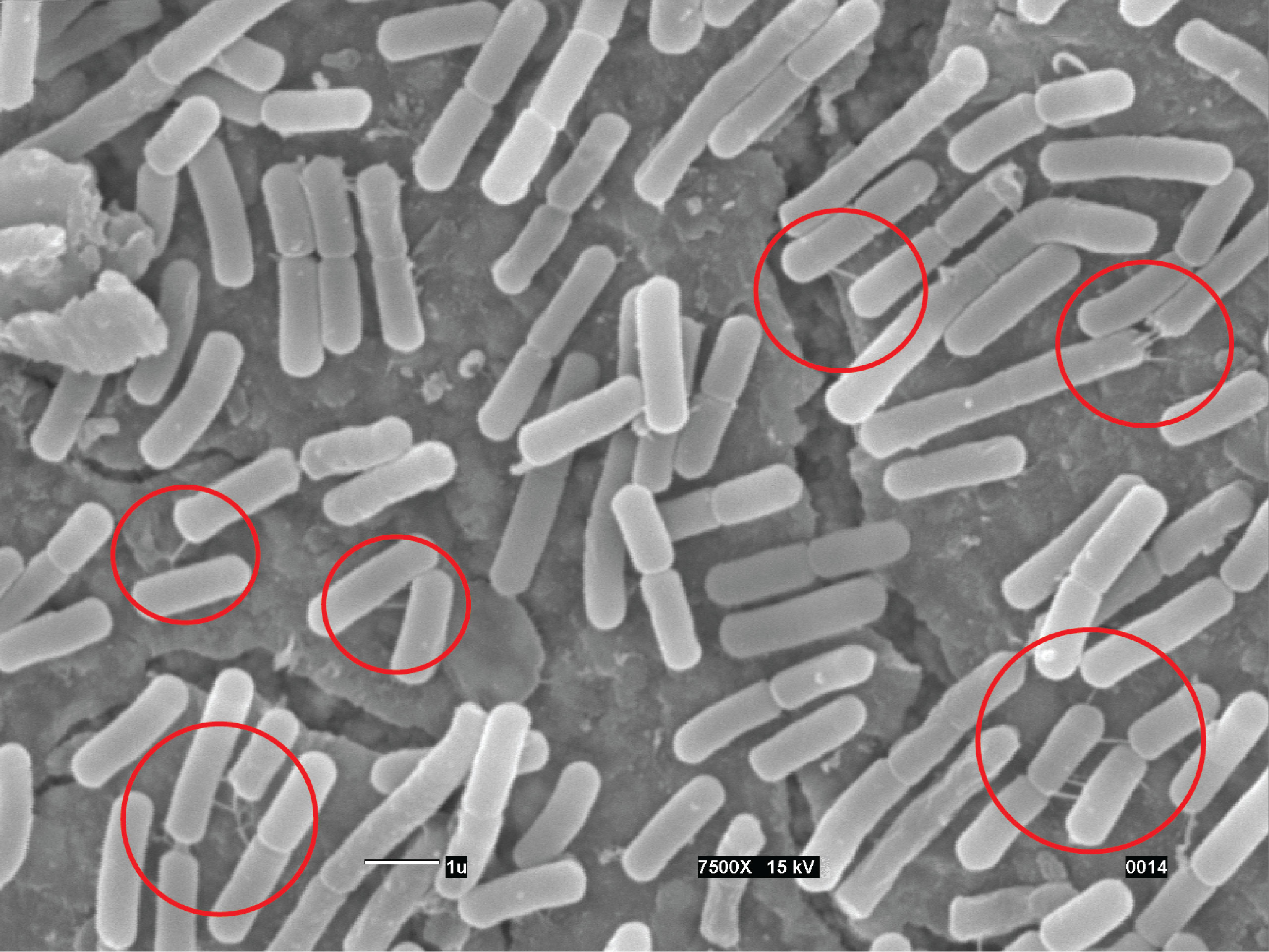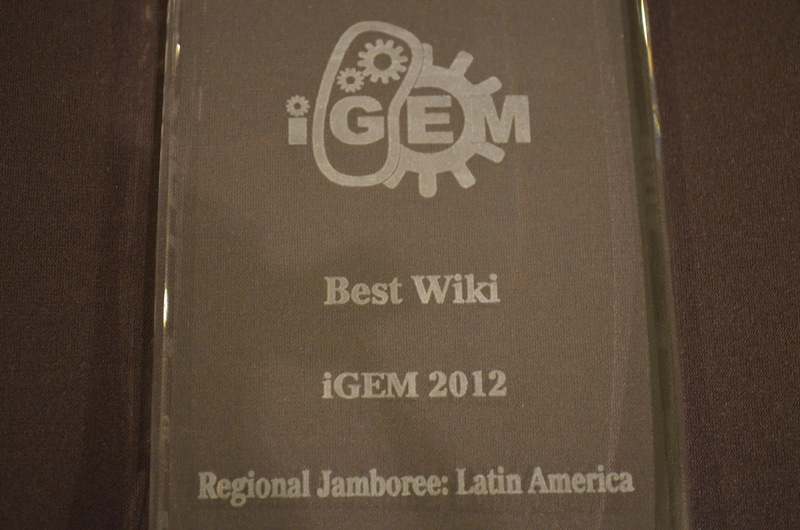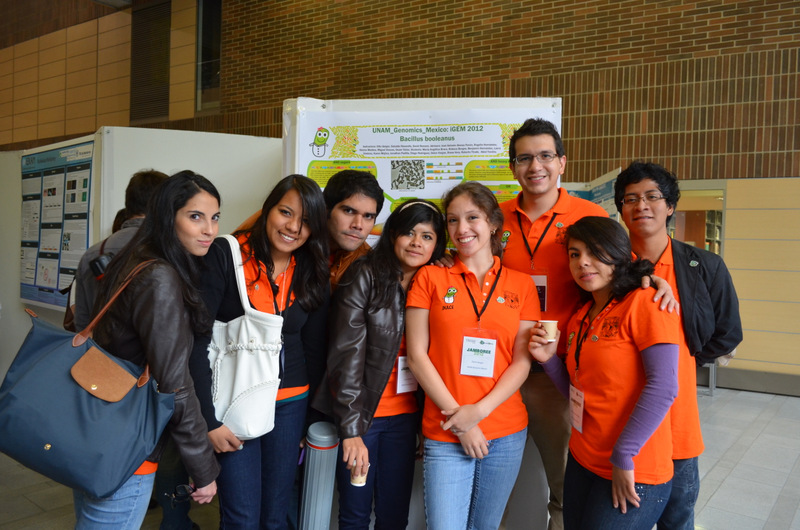Team:UNAM Genomics Mexico
From 2012.igem.org
| (8 intermediate revisions not shown) | |||
| Line 1: | Line 1: | ||
{{:Template:Team:UNAM_Genomics_Mexico/webhtml| content= | {{:Template:Team:UNAM_Genomics_Mexico/webhtml| content= | ||
__NOTOC__ | __NOTOC__ | ||
| - | |||
<center><h1>'''Welcome to our homepage'''</h1></center> | <center><h1>'''Welcome to our homepage'''</h1></center> | ||
<br /> | <br /> | ||
| - | |||
| - | |||
| - | |||
| - | |||
| - | |||
| - | |||
| - | |||
| - | |||
| - | |||
| - | |||
| - | |||
| - | |||
| - | |||
<table border="0" width="900px" cellspacing="15" bgcolor="transparent" id="tablecontentbg" cellpadding="10"> | <table border="0" width="900px" cellspacing="15" bgcolor="transparent" id="tablecontentbg" cellpadding="10"> | ||
<tr> | <tr> | ||
| - | <td id=" | + | <td id="rightcolumn2"><p> |
| - | + | <h2>'''Bacillus booleanus'''</h2> | |
| - | + | ||
| - | <h2> | + | |
<br /> | <br /> | ||
A logic gate is an idealized (or physical) device implementing a Boolean function that performs a logic operation on one or more logic inputs and produces a single logic output. A single logic gate is not a computer, many of them are necessary and they need to communicate with each other to compute stuff. In this way, a complex logic system can be created, like a computer. The architecture of gene regulatory networks is reminiscent of electronic circuits. Modular building blocks that respond in a logical way to one or several inputs are connected to perform a variety of complex tasks. Taking these two main ideas, it could be possible to create a “biological computer”. Bacillus booleanus is a project that wants to link several Boolean operations to make the beginnings of a biological computer. How does everything work? We are working on the creation of different strains of Bacillus subtilis. Each one will be able to perform a single Boolean operation, just like transistors do in an electronic computer. As we mentioned, our bacteria need to communicate to achieve trascendence, but how could this be possible? In 2011 Ben-Yehuda et. al. identified a type of bacterial communication mediated by nanotubes that bridge neighboring cells, providing a network for exchange of cellular molecules within, and between species. By using these nanotubes, our bacteria will be capable to communicate with others, creating complex networks of logic gates. Using this, it could be possible to develop a complex network of operators to regulate, for example, a synthetic metabolic pathway. | A logic gate is an idealized (or physical) device implementing a Boolean function that performs a logic operation on one or more logic inputs and produces a single logic output. A single logic gate is not a computer, many of them are necessary and they need to communicate with each other to compute stuff. In this way, a complex logic system can be created, like a computer. The architecture of gene regulatory networks is reminiscent of electronic circuits. Modular building blocks that respond in a logical way to one or several inputs are connected to perform a variety of complex tasks. Taking these two main ideas, it could be possible to create a “biological computer”. Bacillus booleanus is a project that wants to link several Boolean operations to make the beginnings of a biological computer. How does everything work? We are working on the creation of different strains of Bacillus subtilis. Each one will be able to perform a single Boolean operation, just like transistors do in an electronic computer. As we mentioned, our bacteria need to communicate to achieve trascendence, but how could this be possible? In 2011 Ben-Yehuda et. al. identified a type of bacterial communication mediated by nanotubes that bridge neighboring cells, providing a network for exchange of cellular molecules within, and between species. By using these nanotubes, our bacteria will be capable to communicate with others, creating complex networks of logic gates. Using this, it could be possible to develop a complex network of operators to regulate, for example, a synthetic metabolic pathway. | ||
| Line 35: | Line 19: | ||
<td id="contentcolumn" align="center"><p> | <td id="contentcolumn" align="center"><p> | ||
<h1>We found Nanotubes!!!</h1> | <h1>We found Nanotubes!!!</h1> | ||
| - | [[File:UnamgenomicsNanocirculorojo.jpg| | + | [[File:UnamgenomicsNanocirculorojo.jpg|510px|link=Team:UNAM_Genomics_Mexico/Results/Nanotubes]] |
<b>More info here</b> | <b>More info here</b> | ||
</p> | </p> | ||
| Line 44: | Line 28: | ||
<br /> | <br /> | ||
[[File:Unamgenomicsbogotahome.JPG|300px|link=Team:UNAM_Genomics_Mexico/Notebook/Photos]]<br /> | [[File:Unamgenomicsbogotahome.JPG|300px|link=Team:UNAM_Genomics_Mexico/Notebook/Photos]]<br /> | ||
| - | <b> | + | <b>Regional Jamboree LOTS of FUN!</b> |
</p> | </p> | ||
</td> | </td> | ||
| Line 53: | Line 37: | ||
<table border="0" height="150" cellspacing="15" bgcolor="transparent" id="tablecontentbg" cellpadding="10"> | <table border="0" height="150" cellspacing="15" bgcolor="transparent" id="tablecontentbg" cellpadding="10"> | ||
<tr> | <tr> | ||
| - | <td id=" | + | <td id="leftcolumn2"align="center"><a href="https://2012.igem.org/Team:UNAM_Genomics_Mexico/HumanPractices/Who_is_Mrs._Cohnnie_PhD?"><img src="https://static.igem.org/mediawiki/2012/6/60/UnamgenomicsmissLogomujer.png" alt="some_text" height="190"/><br /><br /><p><b>Meet Mrs. Lupita Cohnnie, PhD</b></p></a></td> |
| + | |||
| + | <td id="contentcolumn2" align="center"><a href="https://2012.igem.org/Team:UNAM_Genomics_Mexico/Notebook/Videos"><img src="https://static.igem.org/mediawiki/2012/b/b7/UnamgenomicsVideos.png" alt="some_text" height="200"/><br /><br /><p><b>Our Videos</b></p></a></td> | ||
| + | |||
| + | <td id="rightcolumn2" align="center"><a href="https://2012.igem.org/Team:UNAM_Genomics_Mexico/Modeling"><img src="https://static.igem.org/mediawiki/2012/e/e2/UnamgenomicsModelwelcome.png" alt="some_text" height="170"/><br /><br /><p><b>Our Model</b></p></a></td> | ||
| + | </tr> | ||
| + | <tr> | ||
| + | <td id="leftcolumn3"align="center"><a href="https://2012.igem.org/Team:UNAM_Genomics_Mexico/Results/Nanotubes"><img src="https://static.igem.org/mediawiki/2012/d/d2/Unamgenomicsnanotubes.jpg" alt="some_text" height="190"/><br /><br /><p><b>Nanotubes</b></p></a></td> | ||
| - | <td id="contentcolumn3" align="center"><a href="https://2012.igem.org/Team:UNAM_Genomics_Mexico/ | + | <td id="contentcolumn3" align="center"><a href="https://2012.igem.org/Team:UNAM_Genomics_Mexico/Project/DeeperDescription"><img src="https://static.igem.org/mediawiki/2012/c/cd/UnamgenomicsLogiv.jpg" alt="some_text" height="200"/><br /><br /><p><b>The System Logic</b></p></a></td> |
| - | <td id="rightcolumn3" align="center"><a href="https://2012.igem.org/Team:UNAM_Genomics_Mexico/ | + | <td id="rightcolumn3" align="center"><a href="https://2012.igem.org/Team:UNAM_Genomics_Mexico/HumanPractices/BiosintetizarteEN"><img src="https://static.igem.org/mediawiki/2012/f/f1/CRATELBIOSINTEtizartechico.jpg" alt="some_text" height="170"/><br /><br /><p><b>Call</b></p></a></td> |
</tr> | </tr> | ||
</table> | </table> | ||
Latest revision as of 02:51, 27 October 2012

Welcome to our homepage
Bacillus booleanus
|
We found Nanotubes!!! |
Regional Jamboree!!! |
 Meet Mrs. Lupita Cohnnie, PhD |
 Our Videos |
 Our Model |
 Nanotubes |
 The System Logic |
 Call |
 "
"









